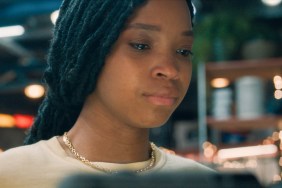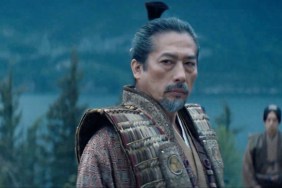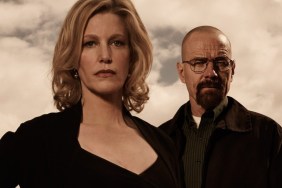Wrapping up ComingSoon.net’s first-ever Doc Week with the Big Daddy of Documentaries, Mr. Errol Morris, one of the true groundbreakers in the doc world, who has been making documentary films for over 25 years, many of which have been considered the best the genre has to offer. His last doc The Fog of War won an Oscar in 2004 as the first of a long string of war-related docs released at a time when our country was at war.
His new movie Standard Operating Procedure is a more direct investigative film about the events that took place between 2003 and 2005 at the Abu Ghraib prison in Iraq where prisoners were tortured and sexually molested by military personnel in an attempt to get information. Morris conducted comprehensive interviews with the members of the 372nd MP Company that were involved in the controversial incidents that shocked the world. Working with an investigator from their trial, Morris recreated many of the events using shocking hyper-realistic reenactments that are as jarring as they are fascinating.
There are tough interviews and there are tough interviews, but when you’re talking to a man who has grilled the likes of former Secretary of State Robert McNamara, you know you’re talking to someone who is not going to be an easy nut to crack. Morris has deservedly earned his reputation from getting others to talk, so it was somewhat nervewracking to interview him, and though he didn’t give many long eleborate answers, he certainly didn’t hold back when talking about his latest doc.
ComingSoon.net: One would probably assume that your movie started with the famous pictures from Abu Graib, and that you saw them at the same time as everyone else?
Errol Morris: Yes, I did.
CS: Where you did you go from there? Did you try to find copies of the pictures to examine closer?
Morris: Well, you don’t need to look for copies of them because they’re all over the internet and they’re very easy to find. These are probably some of the most widely-seminated photos in history. I have several thousand of them now, but at the beginning, the pictures were everywhere.
CS: This is the first movie you’ve made since “Fog of War,” so when you saw the pictures did you automatically think, “I want to find out more about these pictures, interview the people in them and make a movie about it”? Was it that immediate?
Morris: I like investigating. I could talk to the people that took the photos. I could try to reconstruct the circumstances under which the photos were taken. I could try to learn something about Abu Ghraib independent of all of… I would call it political posturing. The photographs became so highly politicized so quickly that very few people bothered to really look at the photographs and to inquire what’s going on here. They just became grist for various kinds of political bills. That is an interesting phenomenon in and of itself that does fascinate me.
CS: You mean the way that photos are interpreted by different people?
Morris: How the photographs were interpreted, how they were used, how they were seized on by the left and the right in different ways, and the role they played, I believe, even in the 2004 election, in helping Bush get re-elected in the sense that they became scapegoats. They became sort of a set of excuses if you want to know why the war is going badly, why the war is going south, why the Arab world hates us, you have these photographs to point to.
CS: Obviously, there’s a lot of aspects to the movie: the interviews, the letters, the recreations. At that point, did you try to find the people in the photos to talk to them? What’s the first step in starting a doc like this?
Morris: There’s lots of steps, bringing in the people, involving the people who were involved in the photographs in some way, the people who were there, the people who could offer some kind of perspective on what I was looking at. All of that became very much a part of it.

CS: How difficult is it to get these people to open up and talk to you? Did they just want to set the record straight on film or were there other reasons?
Morris: Very hard, yeah, many of these people served time in prison, and received dishonorable discharges. They are seen as monsters in one way or another; I think the left and rights see them as monsters. I think they share that, and part of the interest is turning them back into people.
CS: When you started talking to them, you must’ve had some opinion of your own about what happened at Abu Ghraib, so did you have to put your own biases aside and just be open to whatever they had to tell you?
Morris: I can’t say that I’m completely unbiased because I am politically biased in my own ways, but I can try to look at evidence as an investigator. I can try to listen to what people have to say. I can collect various documents. I have tens of thousands of pages of documents collected during the making of this movie, I can try to reconstruct to the best of my abilities what happened there.
CS: The gentleman who actually analyzed the photos, he must’ve been very helpful, so did you work him in what to look into or did he just present what he had found to you to use in the film?
Morris: Presenting what he found because he had to this investigation in connection with the various court marshals, but of course that’s an amazing thing for me, the iconic picture of torture, the picture of Gilligan on the box with wires is identified as standard operating procedure by a member of the investigation.
CS: Did you ever want to question him or go further into depth with his decisions?
Morris: I mean it’s in the movie. I think he explains why, but it’s not me saying it. You’re wondering what the hell is that fine line? I mean, if you walk into the prison on day one as Javal and Sabrina did, and you see people in sex positions, stripped naked, with women’s underwear on their heads, well clearly that’s part of the job. It also involves sexual humiliation from the very beginning, and you’re also told that this is policy, this is what you’re supposed to do, this is what you’re required to do, this is what your commanding officers tell you is part of your job description, is to do this kind of thing, and you think, “Well, you know, I don’t know,” Sabrina writes a letter home to her girlfriend Kelly, and she says, “Well, this seems wrong. I’m going to take these pictures in order to expose the military for what it is.” Now, I find all of that interesting. Then you wonder, “Well this kind of sexual humiliation, that’s okay, but this kind over here is not.” My own way of thinking is that it becomes kind of insane, the criteria you don’t really quite make sense, it seems like a world that’s just gone quite mad, it seems like bedlam. Ultimately, the jury decides.
CS: The jury decides, based only on the investigator’s findings though.
Morris: His and other people’s findings, he wasn’t the sole person who determined.
CS: The military personnel you interviewed were telling the story from their own viewpoint. As a filmmaker while you’re talking to them in your head, are you saying, “I don’t think these people are telling the truth”? And if you think they’re lying, do you keep what they say in the film and in your investigation? In a sense, you have to be your own jury as a filmmaker as well.
Morris: It’s clear when you’re interviewing someone and you think about what they’re saying and you think about how truthful or untruthful it is
but my style is to let people talk. I’m interested in preserving their accounts of what they saw. I mean, yes of course people are lying often, but they often can be lying to themselves. They also can be trying to figure out themselves and what their own experience might be. That’s our job is to go through the stuff and think about it.
CS: Our job as a viewer?
Morris: And as a filmmaker.
CS: When you started making this movie, you must’ve had a very specific thing you wanted to do with this movie, and as it went along, did that change?
Morris: I think the specific thing I wanted to do with it was I wanted to listen to these people’s accounts and make a movie around it.

CS: The recreations are very haunting. Did those come about at the end, after you had finished all the interviews and done your investigation?
Morris: More or less, yes. We built a piece of Abu Ghraib on a stage in L.A. and shot. There was one interview done after the reenactments, Lynndie England was shot afterwards.
CS: Did you have any thoughts about actually going to Abu Ghraib yourself and visiting the site where this happened or were you fine going on photos and recreations?
Morris: We had certainly talked about going there. There’s sort of a question as to what I’d actually hope to photograph there. I mean it’s not a movie about Abu Ghraib the physical plant, it’s a movie about the photographs. The photographs are the real evidence. The real place if you like, the rest is just retrospective. The letters of course are the real letters. You’re trying to tell a story about something that no longer exists since the fall of 2003 when all of this stuff went down. I wanted to go, but by 2006 when I started making the movie, it had become so incredibly dangerous to go there and the control of the prison was transferred from the U.S. military to Iraq, the place was always dangerous, it just got more dangerous, it’s the middle of the Sunni Triangle, we found that the cost of actually hiring one of these companies, like you know, Black Hawk, or whatever, to actually insure that you could get there and get out without getting blown to smithereens was actually prohibited.
CS: Alex Gibney’s “Taxi to the Dark Side” (this year’s Oscar-winning doc) is obviously very different from your movie, as it doesn’t focus specifically on Abu Ghraib. What do you do when you’re making a movie like this and another movie about the same subject pops up? Do you try and watch it or do you try and avoid it so that it doesn’t compromise your own opinions on the subject?
Morris: I don’t see it as a problem. I think these are huge stories, it’s not like there’s one movie to be made, even on Abu Ghraib. There’s a zillion movies to be made of it. I never felt what other people were doing was what I was doing, I still don’t. It doesn’t affect me one way or the other.
CS: Is there some sort of danger to the prevalence of cameras everywhere these days? If the cameras weren’t at Abu Ghraib, none of this would have been exposed, none of the photos would be out there to be interpreted in different ways. Is this something that the film is trying to expose or warn against?
Morris: Well, the photographs actually rendered an enormous public service. I think under other circumstances, Sabrina Harman would’ve won a Pulitzer Prize for photography. That’s the only way that we know of Manadal al-Jamadi’s death is through photographs she took of his corpse. There’s a danger in anything that could be misinterpreted, misunderstood. This is trying in some way educate the public and myself about the ways in which that could happen.
CS: Interesting, and do you think the higher-ups will ever be held responsible for any of what happened at Abu Ghraib?
Morris: I would like them to be, certainly. It’s like “It’s a Wonderful Life” with Potter winning in the end. It’s a bad thing for America when lone soldiers get punished and the higher-ups who are responsible walk away scott-free. It’s not good for anybody, it’s not good for our society, it’s not good for America. It’s bad.
CS: I agree and that seems to be the lesson we’re learning from a lot of these things, it seems like a lot of people will get away with things which is saddening in ways.
Morris: Yes, saddening in most ways.
Standard Operating Procedure opens in select cities on Friday, April 25, after playing at the Tribeca Film Festlval on April 24. This concludes the first-ever Doc Week but look for more interviews with interesting doc filmmakers in the future right here on ComingSoon.net.









